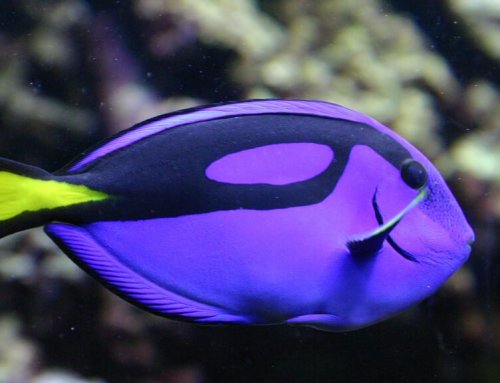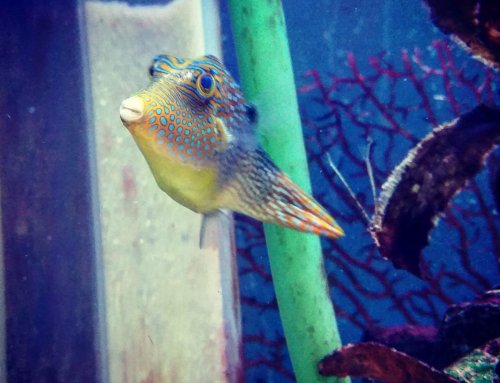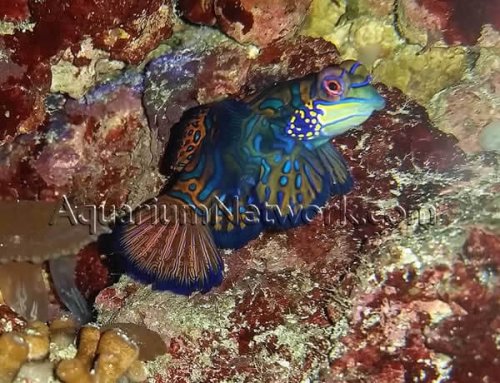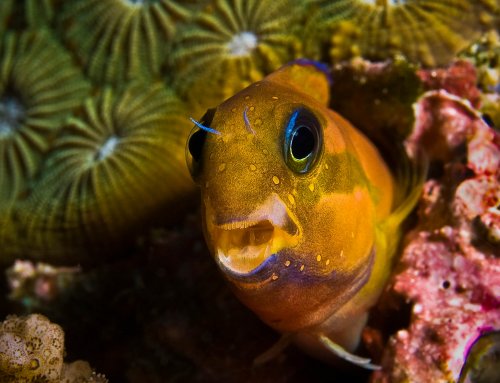When you hear of saltwater aquariums and ask hobbyists what type of livestock they have, the yellow tang is one of their favorites. This surgeonfish can be readily bought in local pet stores. They are easy to collect in the wild, acclimate well, and add a nice splash of color and to any tank.
By far the most popular tang available, the Yellow Tang (Zebrasoma flavescens) has only a single color, but that color is enough to make it standout from all other tangs. It is fully covered from head to tail with a radiant yellow with a small white barb on either side of its tail fin used for defense. When not in use the spine is folded down into a groove. Like all seven of the sailfin tang species, when the fins of the Yellow Tang are fully extended its height is about the same as its length, giving it a disk-shaped appearance. When sleeping or stressed, a white line appears on the flanks of this fish.
Yellow Tangs in the Wild
Sometimes called the yellow sailfin tang, the lemon sailfin, or the somber surgeonfish, the natural habitat of yellow tang is widespread throughout the Pacific Ocean – from Japan to Hawaii and has also been reported off the coast of Florida in the Western Central Atlantic. Most yellow tangs collected for the marine aquarium hobby come from Hawaii. In Hawaiian, tangs are called, “lau’ipala,” (translates literally as “yellow leaf”) which is very appropriate, especially when they are seen from above the water. Growing to about 20 centimeters, the yellow tang prefers coral reefs in both protected lagoons and seaward reefs. In the wild, yellow tangs may be seen singly or in groups constantly picking at the reef in their search for filamentous algae.
Breeding
The yellow tang is a pelagic spawner, which means that they release free floating gametes, sperm and eggs, into the water to be taken away by the current. The male and the female will release sperm and eggs after a courting ritual. In captivity, they can be very difficult to breed.
Introducing a Yellow Tang to Your Aquarium
If you are going to keep more than one tang in the same tank, it is best to introduce them simultaneously, or to introduce smaller fish first. Although an ideal community fish, this species can be aggressive toward surgeonfish tankmates, especially members of its own kind, after it has acclimated to its new home. It will also defend a preferred hiding place from intruders. Adults reach up to 7.9 inches (20 cm), but are slow growing and long lived in the aquarium.
Tank & Water Conditions
For those who own a reef tank, these fish are completely reef safe. It should be housed in an aquarium of at least 100 gallons with plenty of room to swim, as well as hiding places. It will spend time in the open water and darting in and out of the rocks and corals. It will sleep in crevices at night. Tank conditions should be kept in temperatures between 72 and 78 degree Fahrenheit. The Ph balance of the water should also be maintained between 8.1 and 8.4. The specific gravity should be maintained between 1.020-1.025. It can be kept under normal lighting conditions in the aquarium, but can also be kept under very bright light as long as some dimly lit spaces are provided. All surgeonfish and tangs thrive with good water movement, need lots of oxygen, and love to have the water rushing over their gills at times. Provide strong movement in at least one area of the tank.
Diet & Feeding Techniques
Yellow Tangs are mainly herbivores. They feed almost entirely on brown macroalgae and should be offered a wide a variety of foods. In the wild they feed mainly on filamentous algae which they scrape from hard surfaces. You can also offer dried seaweed tied to a rock or use a veggie clip and feed at least 3 times per week. Providing a vitamin supplement can help provide for their nutritional needs. This can be done by soaking dried pellets with liquid vitamins, adding vitamins to the food, or adding a liquid vitamin into the water.
Tangs should be offered high quality foods formulated for herbivores along with frequent feedings of dried marine algae like Nori sushi wraps or a commercially prepared sheet food like Sea Veggies
.
A Warning
Tangs derive their name from a Greek word meaning “thorn tail,” and you should take note of this fact, as they have a scalpel-sharp retractable blade on each side of their tail. A cut from its scalpel can cause discoloration and swelling of the skin with a risk of infection. The pain lasts for hours then still ends up having a dull ache. So be cautious when handling a tang!
Beautiful, hardy and a fiend for filamentous algae, the yellow tang is fun to watch and easy to take care of. It can live five to ten years in the aquarium. With good care and proper maintenance, it will be a great fish to keep!
To keep the great information coming please visit our sponsors:






Leave A Comment